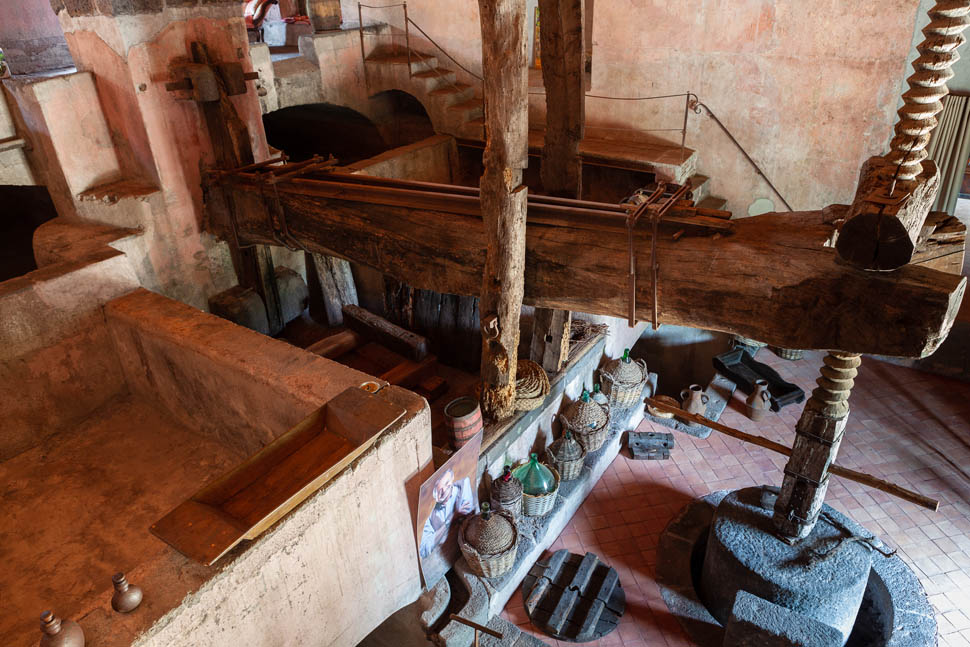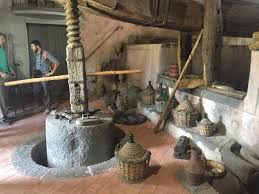‹ Go back to Tour
Il palmento

This Palmento (a local, dialectal word) was built in the 1700s and is essentially a vinification hall, the place where grapes were crushed and the resulting must was fermented to give origin to wine. Our ancestors have produced wine here for centuries, until the 1980’s, offering it to friends or selling it in bulk.
Today, the Palmento is no longer used, of course, but it serves as a clear testimony of Etna’s long winemaking tradition. The way this Palmento worked is quite complex. There is a higher level, known as Pista, where grapes were gathered after harvest and crushed through the simple act of stomping. This was done by a squad of workers wearing heavy boots. Through stomping, the fruit’s juice was physically separated from the skins. The juice, which was colorless, would then flow down and fall in the four cement Fermentation Vats located immediately below the Pista.

The skins, instead, because of their solid state, were gathered from the Pista floor using a shovel, and thrown into the central vat, where the pressing occured with the aid of a heavy chestnut beam. The resulting juice, much richer and darker, would then flow into the other two Fermentation Vats, located at the ground level of this Palmento. Spontaneous fermentations would then start in all vats, triggered by the natural yeasts present in the grapes. The yeast converted the grapes’ sugars into alcohol (which stayed in the juice) and carbon dioxide (which would get dispersed into the air), eventually creating natural wine. The colorless wine and the darker wine were then blended and sent to age in the room next door, which was originally a cellar and has now been converted into a grand wine tasting room.
